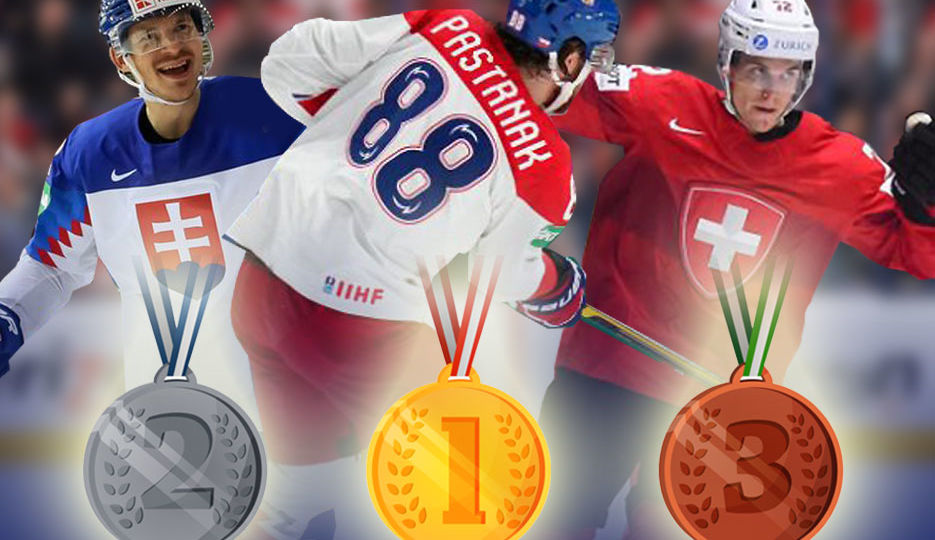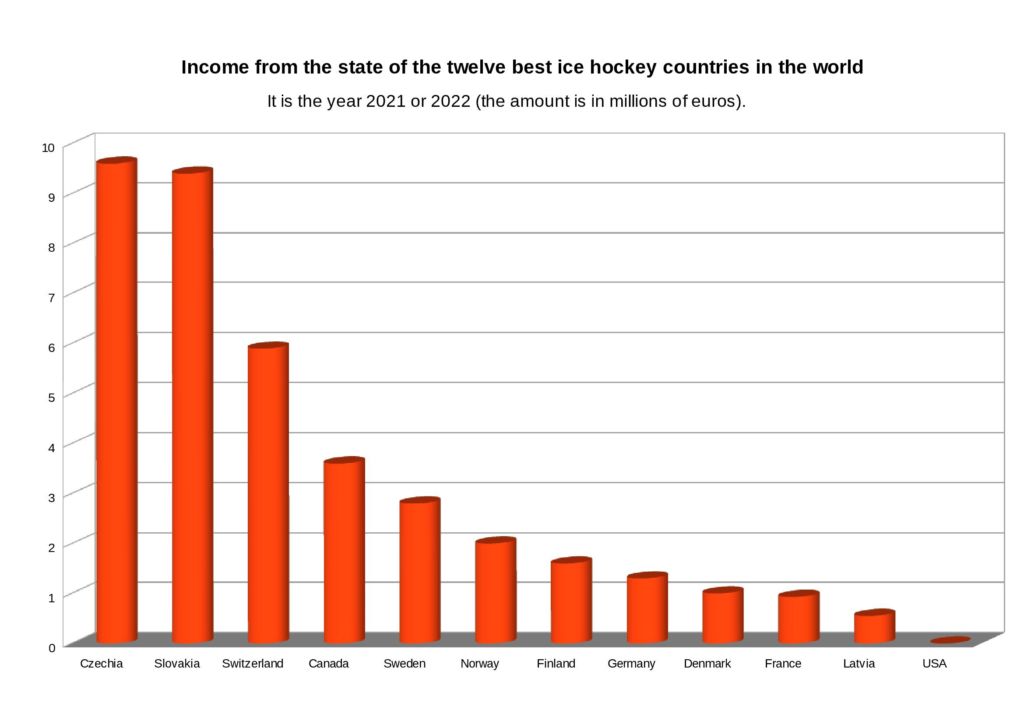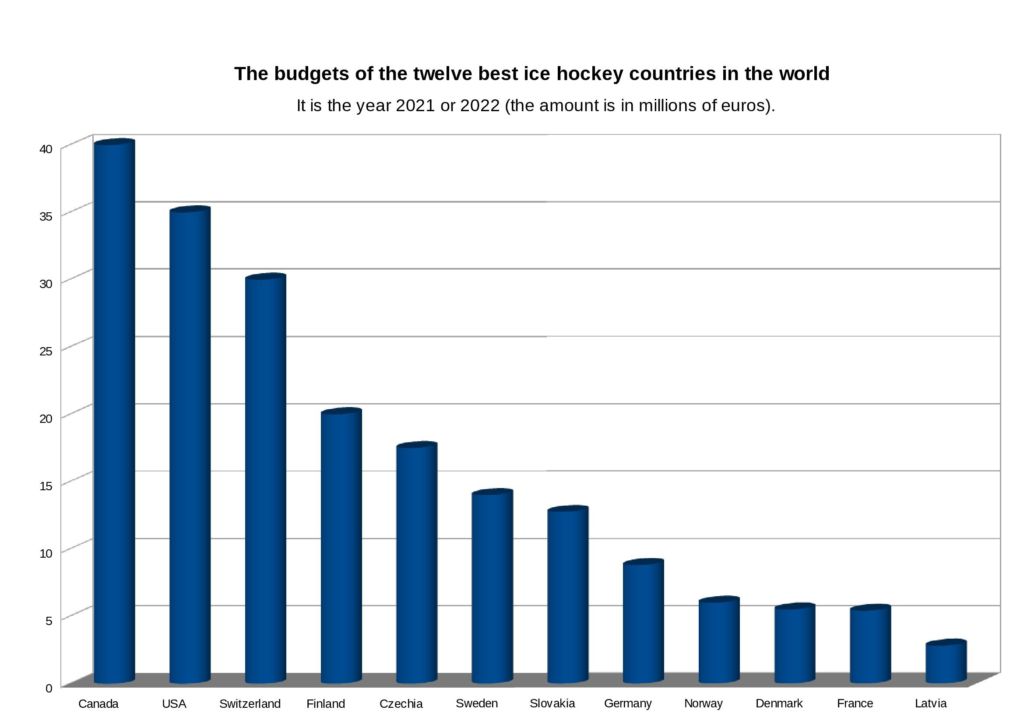
It’s been almost thirty years. On January 1, 1993, Czechoslovakia finally dissolved. Where did the ice hockey steps of these two countries follow? The Czech Republic remained in the top world group, and Slovakia went all the way to the third (C) category. “I put my skates back on because Slovakia was discriminated against. The Czech Republic took all the credit and we stayed at the bottom,” former forward Anton Šťastný told this site earlier. Several Slovak personalities said: “if Slovakia had not managed to advance to the B category in 1994 in Poprad and Spišská Nová Ves, and to the A group in 1995 in Bratislava, we might still be at the bottom today”. Communism reigned in socialist Czechoslovakia for 41 long years, and sport was one of the regime’s most important propaganda tools. And these methods of financing remained customary even after the collapse of the federation. The Czech Republic and Slovakia have revenues from the state (19 million euros) almost identical to the ten other best countries in the world (19.5 million euros) according to the IIHF ranking (1st to 13th place without Russia). How is it possible?
Several experts agree that the US has the best development ice hockey program today. Ice hockey in America is managed by USA Hockey (it has nothing to do with the professional NHL), which has approximately 530,000 members. What amount does the state contribute to the running of this company? “We don’t have any funding from our government at any level. I think that’s kind of unique because I believe just every other association gets government subsidies,” said Dave Fischer, director of communications for USA Hockey. In terms of governmental support, Latvia is also in a tough spot, where ice hockey is the number one sport, just like in Slovakia, the Czech Republic, Finland and Canada. “Usually we (four different institutions) receive something between 500 and 600 thousand euros,” explains Andris Aninš, the financial director of the local federation. France, Denmark, Germany and Finland follow in the amount of support from public sources. Come again? The state that won three gold medals and one silver in the last four major tournaments receives only 1.6 million Euro? “Yes, and in addition, it will get a small amount from the 4.2 million euros (support of the sport academies), which is used for the operation of the sports academy and training center, and young hockey players also benefit from it,” explains Kari Niemi-Nikkola, chief inspector responsible for physical activity at the Ministry of Education and culture. After the reigning world champions and Olympic champions, it’s the turn of its two neighboring Nordic countries. First Norway. How much does NIHF receive from the state? “We fall under the Ministry of Culture, but the money does not go directly from the government’s budget. The state created a monopoly betting company, through which betting is legal. All the money the company earns is poured back into sports. So the support does not go directly through the government, but at the same time, this system falls under the state. In hockey, we are talking about a sum of approximately two million euros,” explains Kristoffer Holm, assistant general secretary of the federation. After the NIHF, it’s the turn of the Swedish Hockey Association SIHA which receives according to the information of the Business Controller Swedish Sports Confederation Peter Eriksson 2.5 to 3 million euros from the government every year. In fourth place is the federation Hockey Canada (it has nothing to do with the professional NHL). “In the 2021/22 season, the support amounted to 5.9 million euros. The financial subsidies consisted of contributions from the Swiss Olympic, the Federal Sports Authority BASPO, and a share from the lottery (the Sport-Toto company),” sends the reply of communication director Thomas Hobi after consultation with the CEO of the Swiss association, Patrick Bloch. Imaginary silver medals travel to the heart of Europe. Slovakia, which, after retreating from its position, is trying to adapt again among the top eight in the world, completely unexpectedly collects more than 3.5 million euros more than one of the richest countries on the globe. And what amount is needed in the hockey world to be completely at the tip of the iceberg? The Czech Ice Hockey Association received 244,730,000 Czech crowns from the National Sports Agency in 2021, which, when converted to the date of 6/30/2021, amounts to 9.6 million euros!

The richest ice hockey association in the world is Hockey Canada, whose assets are close to 100 million euros. In the fiscal year 2021, this organization had a budget of 40 million euros. The strongest hockey country in the world is followed by USA Hockey and the Swiss Ice Hockey Federation SIHF, whose budget covers the 2022/23 season. In fourth place, it’s Finland. “FIHA’s budget is roughly 20 million euros, but of course, it varies a bit from year to year,” explains Jaakko Luumi, the association’s financial director, and Kari Niemi-Nikkola from the Ministry of Education and Culture follows him up: “It should be noted that Finland the hockey federation is economically very independent, mainly thanks to a clear strategy that has been going on for decades, and also thanks to the possibility of regularly hosting the World Championship.” The country of a thousand lakes organized a record four World Championship in the third millennium and will host the fifth in May 2023 together with Latvia. In 2012, the championship brought in 8,2 million euros, and a year later 3,9 million euros. After accounting for the WC 2022, they expect a competent improvement of 5 to 10 million euros. After the reigning world champions and Olympic champions, it is the turn of the Czech Republic, Sweden and Slovakia. The first country with a budget under ten million is Germany and its Deutsche Eishockey Bund, which is working with an amount of 8.8 million euros in 2022. DEB is followed by two Nordic countries. Norway and Denmark. “Under normal circumstances (not pandemic) our budget is 5.5 million euros,” replies Danish journalist Michael Søvsø after consulting CEO Ulrik Larsen. Almost at the very end is the second-largest European country. “In the long term, the FFHG management realizes that they have to increase the budget from the current 5.4 million euros to 14 million. Then they can be competitive in the ice hockey world,” explains French journalist Brice Vorin, who founded the website plandematch.fr where in his articles, he creates various analyses and uses advanced statistics. The complete “underdog” is the Latvian Hockey Federation, which in the pandemic year of 2021 had a budget almost half that of the French association. “The state supports LHV very little. In other countries, the number one sports receive a much larger financial injection, and it should be the same here,” adds in a sad voice the former international Herbert Vasiljevs, who works as an instructor for the German association and is also an assistant coach for the Latvian national team under the age of eighteen.

Which ice hockey association invests the most in youth development? “It is very difficult for me to answer this because it is one of our strategic goals and we invest in it in several ways. I think a qualified estimate is that 35-50% (7-10 million euros) of our costs are sent directly or indirectly to youth hockey. However, clubs are responsible for their own finances,” answers Jaakko Luumi. In the 2021/22 season, the SIHF invested 7.7-8.2 million euros in all areas of hockey. It concerns the support of young talents, training and education in Swiss hockey. This amount does not include overhead costs (IT, premises, marketing, communication, etc.). “When it comes to our investment in youth hockey, it’s really, really hard to give the exact number. But it’s significant and maybe even higher which you would expect youth hockey is at the heart of what we do for our sport across the country,” explains Dave Fischer from USA Hockey. The best ice hockey program in the world, National Development in Plymouth, costs almost 3.4 million euros per year. The junior and youth program will cost another 1.1 million dollars and “player development” will cost 2.2 million euros. America, which dominates the under-18 category, is followed by the Czech Ice Hockey Association (approx. 4 million euros) and the Slovakian Association (2.6 million euros). “In Sweden, the federation does not send any money to the clubs. The divisions take care of their own economic management through parents’ and sponsors’ fees. However, the union pays the so-called education fee to the organizations. We have an annual allocation of 7 million euros for this,” adds Tibor Gregor, Slovak native who works in SIHA as a competition administrator. Money for youth was not at all found in the budgets of the Latvians or the French and even the Canadians, whose youth hockey operates on different principles. However, the cradle of hockey is the record holder in income from sponsors – 17 million euros. North of Europe also does a great job with their marketing. About 40% of the overall budgets of Norway, Finland and Sweden come from advertising contracts.

